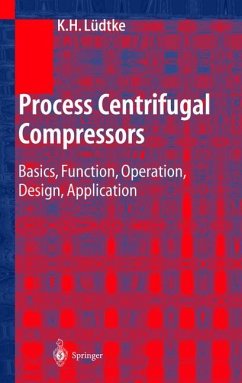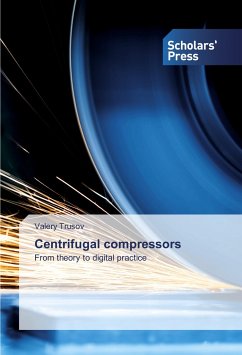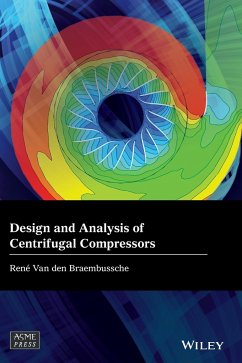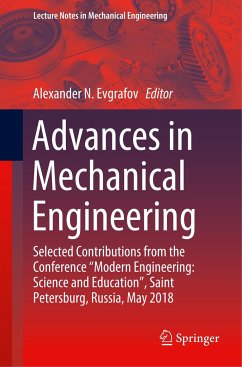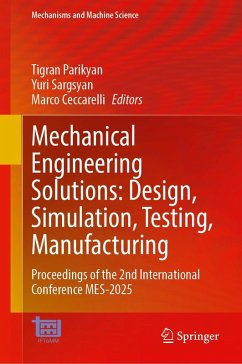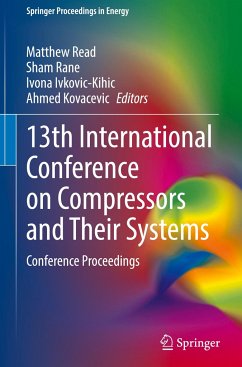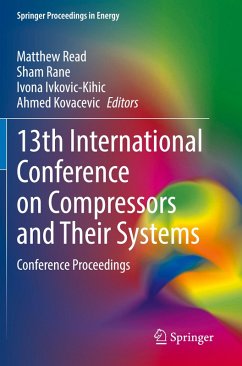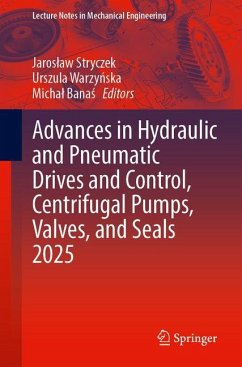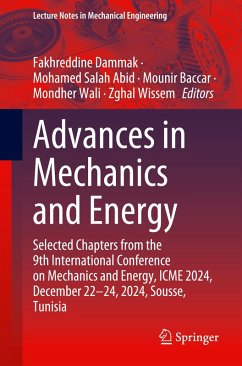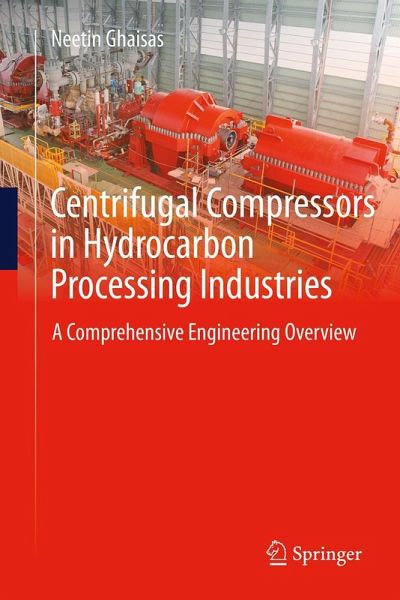
Centrifugal Compressors in Hydrocarbon Processing Industries
A Comprehensive Engineering Overview

PAYBACK Punkte
54 °P sammeln!
This book offers a unique perspective on the aerodynamic and mechanical design features of centrifugal compressors. It provides detailed explanations of auxiliary systems to support engineering professionals involved in the specification, application, and selection of compression strings and packages.The book covers the fundamentals of centrifugal compressor casing and internal design, complemented by in-depth analysis of impellers and rotors. Chapters on surge detection and control, couplings, dry gas seals and their support systems, and lubrication oil systems provide a comprehensive underst...
This book offers a unique perspective on the aerodynamic and mechanical design features of centrifugal compressors. It provides detailed explanations of auxiliary systems to support engineering professionals involved in the specification, application, and selection of compression strings and packages.
The book covers the fundamentals of centrifugal compressor casing and internal design, complemented by in-depth analysis of impellers and rotors. Chapters on surge detection and control, couplings, dry gas seals and their support systems, and lubrication oil systems provide a comprehensive understanding of the underlying theory, operational principles, and design processes.
Topics such as lateral rotordynamics, advanced torsional analysis, shop testing, specialized engineering analyses, and condition monitoring address key knowledge-based engineering parameters. These are essential for achieving industry-standard-compliant designs, optimal performance, safety, and long-term reliability in service.
In addition to discussing conventional concrete foundations, the chapter on machinery modularization introduces innovative installation strategies. These include shifting significant portions of site work to module yards, reducing material movement at job sites, and lowering costs associated with construction and pre-commissioning activities. Machinery and process modules contribute to optimized plot layouts, ultimately reducing the total installed cost of process plant facilities.
Comprehensive and detailed technical specifications for inquiries and purchases aim to eliminate guesswork, misinterpretation, and scope gaps. Errors or omissions in purchase orders can be costly and difficult to rectify during project execution. The chapter on compressor specifications, proposal evaluation, and design coordination addresses these challenges using real-world examples.
In light of global initiatives to reduce greenhouse gas emissions, a dedicated chapter explores the process of capturing and storing carbon dioxide (CO2). It discusses the two primary compressor types used for CO2 compression, provides an overview of sequestration processes and current challenges, and highlights new technologies that extend the life of compressor materials. Configuration options for improved overall efficiency are also examined.
The book covers the fundamentals of centrifugal compressor casing and internal design, complemented by in-depth analysis of impellers and rotors. Chapters on surge detection and control, couplings, dry gas seals and their support systems, and lubrication oil systems provide a comprehensive understanding of the underlying theory, operational principles, and design processes.
Topics such as lateral rotordynamics, advanced torsional analysis, shop testing, specialized engineering analyses, and condition monitoring address key knowledge-based engineering parameters. These are essential for achieving industry-standard-compliant designs, optimal performance, safety, and long-term reliability in service.
In addition to discussing conventional concrete foundations, the chapter on machinery modularization introduces innovative installation strategies. These include shifting significant portions of site work to module yards, reducing material movement at job sites, and lowering costs associated with construction and pre-commissioning activities. Machinery and process modules contribute to optimized plot layouts, ultimately reducing the total installed cost of process plant facilities.
Comprehensive and detailed technical specifications for inquiries and purchases aim to eliminate guesswork, misinterpretation, and scope gaps. Errors or omissions in purchase orders can be costly and difficult to rectify during project execution. The chapter on compressor specifications, proposal evaluation, and design coordination addresses these challenges using real-world examples.
In light of global initiatives to reduce greenhouse gas emissions, a dedicated chapter explores the process of capturing and storing carbon dioxide (CO2). It discusses the two primary compressor types used for CO2 compression, provides an overview of sequestration processes and current challenges, and highlights new technologies that extend the life of compressor materials. Configuration options for improved overall efficiency are also examined.



